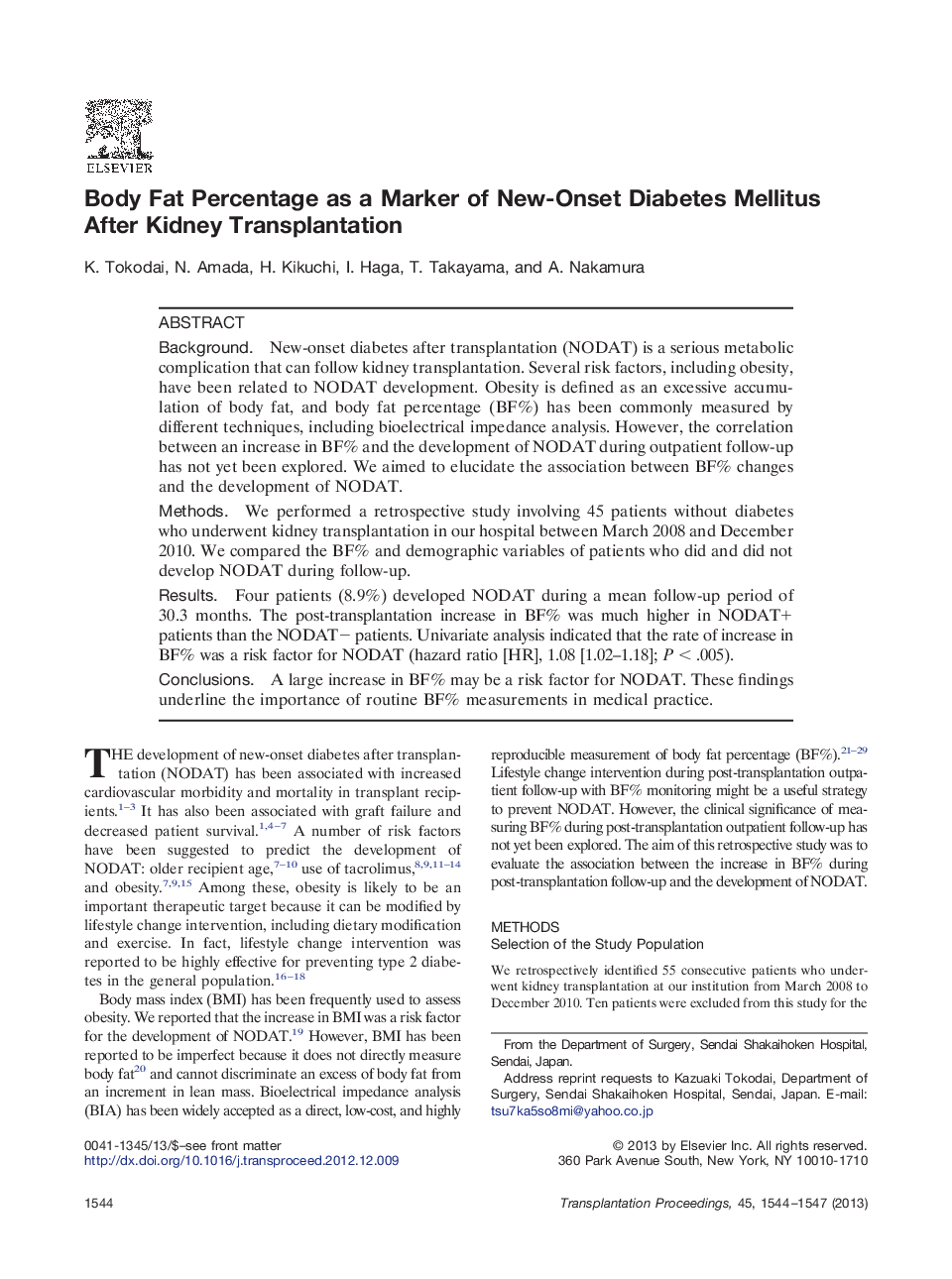| Article ID | Journal | Published Year | Pages | File Type |
|---|---|---|---|---|
| 4257316 | Transplantation Proceedings | 2013 | 4 Pages |
BackgroundNew-onset diabetes after transplantation (NODAT) is a serious metabolic complication that can follow kidney transplantation. Several risk factors, including obesity, have been related to NODAT development. Obesity is defined as an excessive accumulation of body fat, and body fat percentage (BF%) has been commonly measured by different techniques, including bioelectrical impedance analysis. However, the correlation between an increase in BF% and the development of NODAT during outpatient follow-up has not yet been explored. We aimed to elucidate the association between BF% changes and the development of NODAT.MethodsWe performed a retrospective study involving 45 patients without diabetes who underwent kidney transplantation in our hospital between March 2008 and December 2010. We compared the BF% and demographic variables of patients who did and did not develop NODAT during follow-up.ResultsFour patients (8.9%) developed NODAT during a mean follow-up period of 30.3 months. The post-transplantation increase in BF% was much higher in NODAT+ patients than the NODAT− patients. Univariate analysis indicated that the rate of increase in BF% was a risk factor for NODAT (hazard ratio [HR], 1.08 [1.02–1.18]; P < .005).ConclusionsA large increase in BF% may be a risk factor for NODAT. These findings underline the importance of routine BF% measurements in medical practice.
